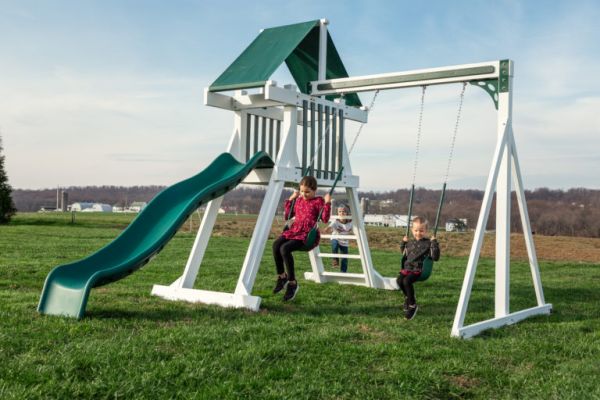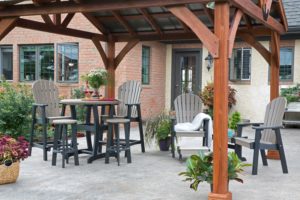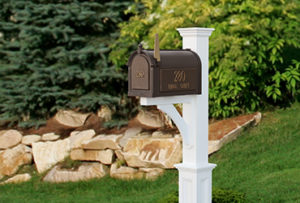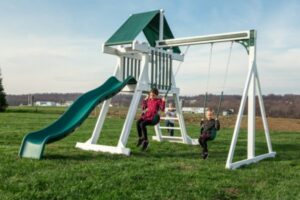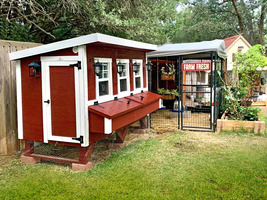Home / Frequently Asked Questions
Frequently Asked Questions
Outdoor Structure Questions
Do you have custom sizes?
We don’t have any sizes other than sizes you see on the website. YardCraft outdoor structures are designed as kits, so we can keep our prices lower. Plus, we don’t have inventory space to store a variety of custom sizes, and keeping our sizes consistent makes shipping easier.
Do you have a recommendation for sealing the wood on YardCraft products? I would like something clear to allow the natural wood grain to show.
Any oil or water based stain and sealer works well for your gazebo. It is important that the cedar is clean and dry during application in order to get the best results. One great option is a UV blocking, semi-transparent stain containing cedar-colored pigments. This will help the natural color of the cedar remain strong and vibrant. We recommend staining and sealing any outdoor structure every 2-5 years, depending on the environmental conditions of the structure.
What is the difference between a pavilion and a gazebo?
Gazebos and pavilions are outdoor shade structures with solid roofs. Our gazebos are enclosed by railings and have one entryway. Gazebos have flooring options and can be screened-in to keep bugs and pests outside. Unlike gazebos, a pavilion is open on all four sides and does not have a floor. Pavilions are usually installed on a poured concrete base.
What is a pergola?
A pergola is a backyard shade structure with an open-lattice roof supported by columns or posts. Pergolas are not designed to block the sun entirely but to provide relief from direct sunlight, while allowing air to circulate freely.
Can I cover my pergola with a solid roof?
Pergolas are great for many reasons, but open airflow is the reason many choose them over other patio structures. Many people choose to cover their pergola roof with fabric to keep out the rain and sun. YardCraft offers a retractable EZshade Canopy made of durable Sunbrella fabric.
Do YardCraft products come with a warranty?
Yes. YardCraft has a 5-Year Limited Warranty on all outdoor structures and Wood Patio Furniture, and a 1 Year Limited Warranty on most other products. Poly Furniture has a 10 Year Limited Manufacturer’s Warranty. Fire Pits from Urban Fire have a 5 Year Limited Manufacturer’s Warranty.
Read complete warranty details here.
My post has a large crack in it. What should I do?
“Splits” and “checks,” as they are commonly called in the industry, are a normal and unavoidable part of owning an outdoor product made from pressure-treated Southern Yellow Pine.
A “check” is defined as a separation of the wood, normally through the rings of the lumber and is the result of seasoning. These “splits” and “checks” are part of the nature of lumber and are an unavoidable part of the drying process.
What often happens is once you’ve received your structure and install it, you probably notice the nice finish and smooth lumber. This is because we keep most of our nice kiln-dried and smoothly, milled lumber indoors and away from additional rain and moisture. However, once your structure is re-introduced to the outdoors with external effects, such as humidity, rain, and the sun, those external effects begin to interact with the lumber and the moisture content begins to change.
As a result of the change in moisture, “checks” and “splits” begin to occur due to the outer surface of the lumber drying and shrinking faster than the inside. The center of the lumber, swollen with moisture, holds solid and the shrinking exterior gives way and splits open. Although an aesthetic issue “checks” rarely diminishes the service life of properly treated lumber. Most often, as the post or beam dries to an equal amount of moisture throughout the board, these “checks” and “splits” will decrease in size or disappear over time.
When a check occurs, grab the stain provided with your structure, and touch up the exposed lumber inside the “check” or “split.” By protecting all exposed areas of the wood, this will help keep your structure looking its best and protect the newly exposed wood.
Just know this is simply the nature of lumber and will add to the character of the structure.
Do you sell direct to home improvement contractors?
We do! Visit our Guide for Home Exterior Contractors to learn more about how easy it is to add YardCraft products to your business’s offerings.
Fire Pits
Are portable fire pits safe?
Fire pits are safe when used in accordance with local open burn laws and basic fire safety rules are followed.
What do you put under a portable fire pit?
Patio pavers are recommended as a base for a fire pit that is placed on grass. A heat shield or a fireproof mat are other options for protecting the area under your fire pit.
Can I use a fire pit in my backyard?
Most often, the answer is yes, but you must follow local open burn laws and have the fire pit positioned at least 10 feet from your home and other structures. Contact your local authorities or fire department to learn more about specific regulations in your area.
Can you put a portable fire pit on a wood deck or grass?
Because of the heat generated underneath the firepit and the possibility of fallen embers, it is not safe to place a fire pit directly on a wood deck. Grass is not ideal for a fire pit, as it is likely to burn and kill your grass. It’s best to set a portable fire pit atop a fire-resistant surface such as a fireproof mat, pavers, or bricks.
Is a fire pit considered an open fire?
Technically, yes. However, most communities and municipalities do not include a fire pit in their open burning laws, as long as the fire pit is off the ground (on legs) or covered. A fire pit that is off the ground or covered is less likely to accidentally contact other flammable materials and is less prone to wind-blown sparks and spreading.
Will my fire pit warp or bend with the extreme heat?
The coals in the center of a fire can burn over 1000°F. It is normal to see some bowing of steel in a fire pit. Often it is more pronounced during a fire and lessens when it cools down. To mitigate warping, we recommend using our Secondary Combustion Attachments that help minimize this effect.
Why is my fire pit changing color?
Steel will patina with heat and exposure to the elements. When raw steel heats up, it will burn off any surface moisture or lubricants from the manufacturing process. This is visible with a rainbow effect and sometimes a dark blue hue. Stainless Steel will turn a beautiful tawny, or gold, look as it is exposed to extreme heat. This is completely normal and adds to the individual character of your fire pit. If you don’t want this look, we recommend going with our heat-rated Black powder coated steel fire pits.
Can I grill on my fire pit?
Our selection of fire pit grills fits perfectly with the Urban Fire™ Collection. The Adjustable Swivel Grill can be used with any of our fire pits, and the Rectangle Cooking Grill Grate is made to fit perfectly with The Farrier™ and The Anvil™. We are always working on new accessories!
How do I maintain my fire pit? Will the paint last?
The paint on the interior of your fire pit may burn off within your first few burns. The paint on the exterior of your fire pit may bubble or chip with time as it wears against the elements. You can maintain your fire pit by lightly sanding any cleaning any spots showing rust or missing paint. You can use any color high-temp spray paint to touch up your fire pit to keep it looking great!
Do your fire pits have a warranty?
Our fire pits in the Urban Fire Collection have a 5 year limited warranty. We do offer replacement parts on all of our fire pits which makes fixing any issue a breeze!
Permits
Is a permit required to put up a gazebo, pergola, or shed?
Contact your local township for help with permits. You can find engineered drawings on our product pages under the Manuals & Drawings tab. Some municipalities might require that you submit a schematic as part of the permitting process.
My township requires a stamped and sealed drawing to issue a permit. What does that mean and do you supply them?
Stamped and Sealed drawings are sent by our engineers to insure that they stand by the integrity of the structure. It is basically an insurance policy, and therefore there is a fee involved. There is no mark up on this fee and it goes directly to our engineering firm. Based on your location and the requirements, there may be up to a $700 fee for Stamped and Sealed drawings and they may take up to 2 weeks to receive via mail.
Costs
How much does a pergola kit cost?
For a basic 10 x 10 pergola, using cost-effective cedar, you can expect to pay $3,000 for materials and $500 for labor, which isn’t much more than a DIY job. High-end pergola installations using more expensive materials, such as Ipe or Teak, can run the price up to $5,000 for materials and $750 to $1,000 in labor costs. Pergola kits from YardCraft start at $1,899 with add on accessories and upgrade options available.
How much does it cost to install an outdoor structure?
Price can depend on if you already have a foundation, if you choose to use gravel, or if you want to have a full concrete foundation poured. A contractor may cost somewhere in the $1,000-$2,000 range depending on the size of the job and the site prep that is needed. YardCraft has created kits that are easier to put together with pre-notched boards and pre-drilled holes, making for a weekend family project to save the cost of a contractor.
I am about to make a purchase and I saw a space for coupon codes. Do you have any coupon codes available?
Sign up for our email club to be eligible to receive coupon codes, exclusive offers, and information on upcoming sales.
Garden Beds
How deep should a raised bed garden be?
Most garden plants need at least 6 to 12 inches for their roots, so 12 inches is ideal. The depth of the bed can vary, but 6 inches of soil should be the minimum. You can make the garden bed as long as you like or build multiple raised beds for growing different crops.
Should I stain or seal my raised garden bed or planter?
YardCraft garden products are not treated or stained because most home gardeners prefer their beds and planters to be free of any chemicals for organic gardening. Cedar and pine both perform well in the elements. If you want to extend the life of your planter, you can stain or seal it with a water-based product of your choice.
Do YardCraft raised garden beds have a bottom?
Our raised beds do not have a bottom and can be assembled directly on grass. A classic gardening trick it to lay cardboard down to prevent weeds from growing into your crops. The cardboard will eventually break down and turn into food for your plants!
How do you fill the Vertical Garden Planter with soil?
The Vertical Garden Planter gets filled from the top. Make sure to even out each shelf as it fills. Watch our instructional video:
Swingsets
Are swings on your playsets interchangeable?
Yes. All YardCraft swings and playset toys are designed to be universal.
How long does playground equipment last?
The standard lifespan of a playset is around 8-10 years. If you keep up with maintenance over the years, a YardCraft playset could last a lifetime!
Poly Furniture
What is poly furniture?
Our poly outdoor furniture is made from high-density polyethylene (HDPE) plastic, which is made from recycled milk jugs. It has the texture and feel of real wood but will last much longer because it won’t crack, rot, or split.
How do you clean poly patio furniture?
Wash your poly patio furniture using a soft rag, soap, and warm water. Mix ⅓ bleach and ⅔ water solution to clean any tough areas. Use a soft bristle brush to get into creases.
Accessories
How do you size a cupola?
For every foot of building width, you should have at least 1.25 inches of cupola width. Measure the width of your building (in feet) and multiply that by 1.25. Following this guideline will keep the cupola proportional to your structure’s roof size. Structures two stories and higher may require one size up, or 1.5″ per foot of roof.
How do you install a cupola?
Our friends over at Royal Crowne put together this excellent installation video to help you install your cupola.
What tools and materials are needed to install a mailbox and lantern post?
To install a mailbox or lantern post, you will need a pressure treated 4×4 that is 84” long for the core of the post. To install it in the ground, you will need pre-mix concrete, a wheelbarrow for mixing, a level, and a shovel (or auger).
Installation
What is the best material for ground cover under a playset?
We recommend rubber mulch, wood mulch, or sand for under your playset. Rubber mulch is highly recommended because it doesn’t wear down like wood.
How much ground cover material is needed for a playset?
The United States Consumer Product Safety Commission recommends at least 6 feet of space in all directions, as well as more space in front and behind each swing. The distance in front and behind each swing should be equal to the total height of the swing. For example, if the swing is 8’ high, there should be 8’ of clearance in front of the swing and 8’ if clearance behind the swing. It is recommended to have at least 9-12 inches of mulch under your playset to provide sufficient cushion to help protect your children from falls.
How long does it take to build a gazebo, pergola, pavilion, or shed?
What kind of foundation is needed to install my structure? Can I put it directly on grass?
Installing the structure on grass is not recommended due to settling and wearing of the wood. We recommend using a concrete slab, crushed rock, or putting footers under posts to make sure the structure is level.
Do you also install if we order a structure?
We do have a local crew we work with in New Holland, PA. They can travel to do installations in our area, but the cost includes mileage fees. We recommend looking for local contractors or handymen, as our kits are made to be a breeze to assemble!
Availability
I didn’t see the size I’m looking for. Do you offer structures in different sizes that aren’t listed on your website?
All sizes available are listed on our website. We make all of our structures in bulk in order to keep our prices lower, which means we don’t do any custom sizes.
How long will it take to receive my order?
All structures may take up to 2 weeks to ship. If you have a specific need, such as receiving it as soon as possible, or you would like to receive it a month down the road, we do our best to accommodate your requests. All structures ship out of Pennsylvania. Shipping to the West Coast can take up to 5-6 days for delivery after it leaves our warehouse.

